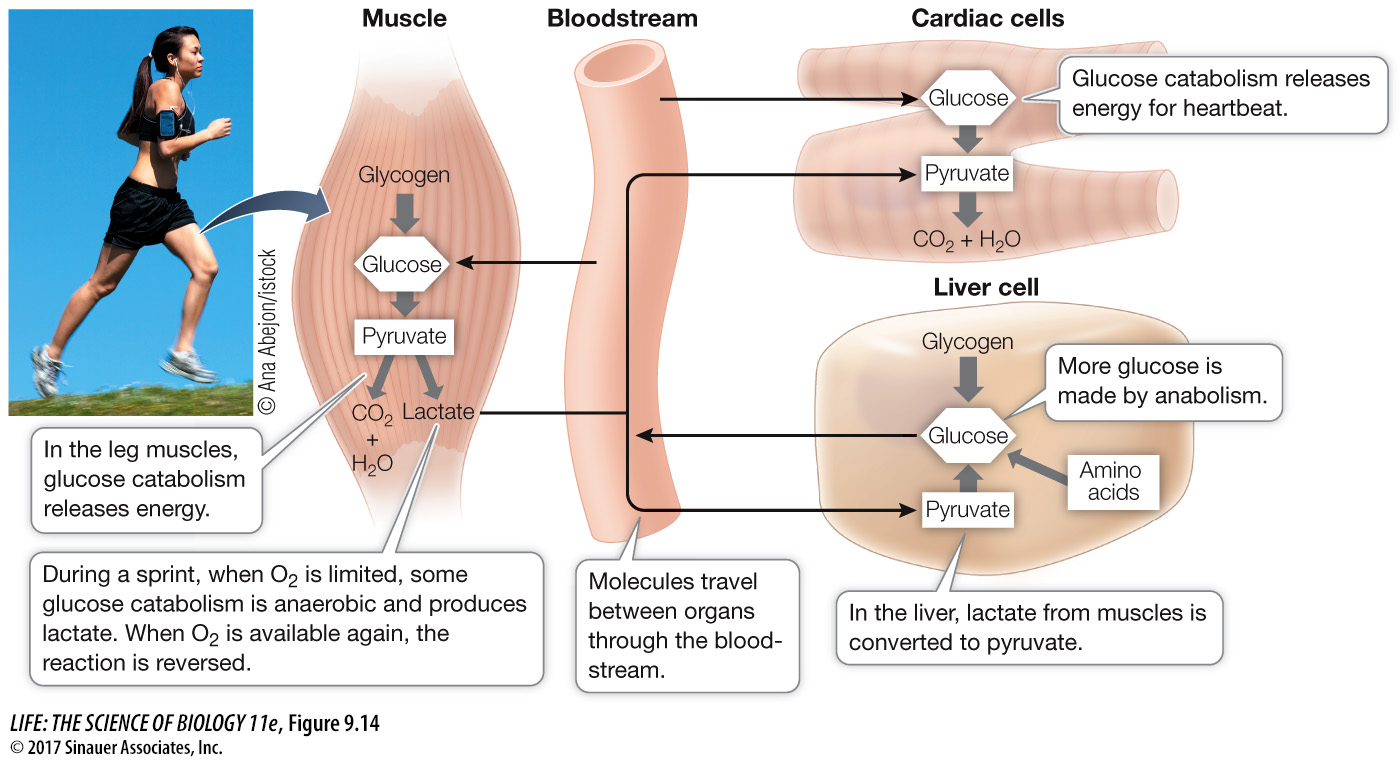Catabolism and anabolism are integrated
A carbon atom from a protein in your burger can end up in DNA, fat, or CO2, among other fates. How does the organism “decide” which metabolic pathways to follow, in which cells? With all of the possible interconversions, you might expect that cellular concentrations of various biochemical molecules would vary widely. Remarkably, the levels of these substances in what is called the metabolic pool—

*connect the concepts Control of metabolic pathways often rests with regulation of enzymes already present. Review the mechanisms of enzyme regulation in Key Concept 8.4.
When you’re walking or jogging, the muscles that most need energy are the leg muscles that power movement and the heart muscles that circulate blood. The energy comes from the catabolism of glucose by glycolysis, the citric acid cycle, and oxidative phosphorylation. These muscles therefore need a lot of glucose. Some glycogen is stored in the leg muscles and is hydrolyzed to glucose monomers. In addition, glycogen is hydrolyzed in the liver, which releases the glucose into the blood. As this glucose is used up by the working muscles, more glucose is made in the liver by anabolism from amino acids and pyruvate. Some of this pyruvate comes from lactate formed by fermentation in the leg muscles and that has been transported back to the liver in the blood.
The exquisite integration of catabolism and anabolism cannot be accomplished without control points in the biochemical pathways. For example, something must “tell” the liver to make glucose rather than catabolizing it or storing it. How are the systems integrated?